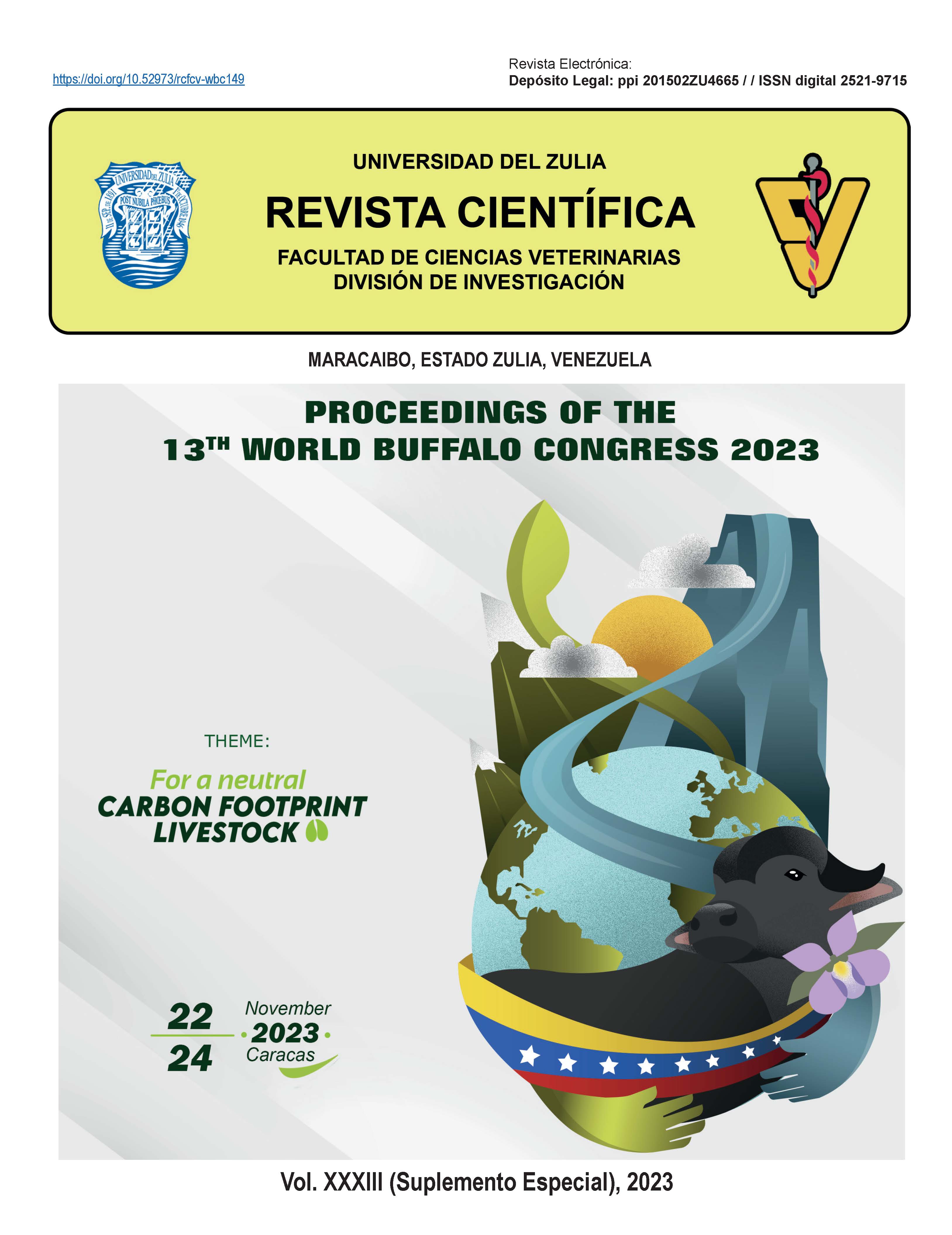Gastrointestinal parasites in buffalo calves in a farming context in Colon county, Zulia state, Venezuela
Abstract
The buffalo (Bubalus bubalis) is an animal species of great importance for producing milk and meat. Buffaloes have been considered rustic and resistant to many pathologies. However, they are susceptible to parasitic infections. Gastrointestinal parasites (GIP) decrease production, cause growth retardation and death of animals. Furthermore, buffalo calves are the most affected animals. To evaluate the prevalence (%) and mean intensity of infection of gastrointestinal parasites in buffalo calves and their association with age and sex, a non-experimental field study was carried out in the Agropecuaria Rosa Elena (a dual-purpose buffalo system) using crossbreed animals (Murrah and Mediterranean breeds). The buffalo farm is located in the municipality of Colón, Zulia, Venezuela. Eightythree out of 106 buffaloes were randomly selected, stratified by age (months): A (≤ 1 m); B (>1 ≤2 m); C (>2 ≤ 3 m); and D (> 3 ≤ 4 m), and sex. Fecal samples were taken directly from the rectum and processed by McMaster’s technique using saturated saline as flotation medium. The eggs or oocysts per gram of feces (EPG/OPG) were determined. The data was analyzed to determine the prevalence using contingency tables and Chi2; for the intensity variable, the mean of EPG and OPG was calculated, and an ANOVA and comparison of Tukey means was performed. The overall prevalence was 94%, with polyparasitism (37.8%, 32.9%, and 3.7% in two, three, and four GIP species, respectively). Therefore, it was possible to
identify these parasites: strongylids (34%), Strongyloides sp. (44%); Toxocara vitulorum (37%) and Eimeria spp. (83%). In the age groups the overall prevalence was higher in C (100%), for strongylids (77.8%) and Strongyloides sp. (72.2%) in C, T. vitulorum (66.7%) in B, with significant association (p<0.05); Eimeria spp. was the most prevalent GIP in all age groups. The variation in intensity of infection of strongylids increased from A (666.7 EPG) to C (978.6 EPG); in contrast, Strongyloi-des sp. decreased with age, being higher in A (442.3 EPG). T. vitulorum increased from A (2250 EPG) to C (9225 EPG). However, these variations did not show significance (p>0.05). Eimeria spp. presented the higher mean intensity of infection in A (102243.18 OPG), with significant statistical differences (p<0.05) in all groups. No significant statistical differences were found in the prevalence and mean intensity associated with sex. It is concluded that GIP are affecting buffalo calves with a high general prevalence, being Eimeria spp, the most significant. It is also shown that the prevalence is associated with the age of the animals, which is of great importance for the design of control programs.
















